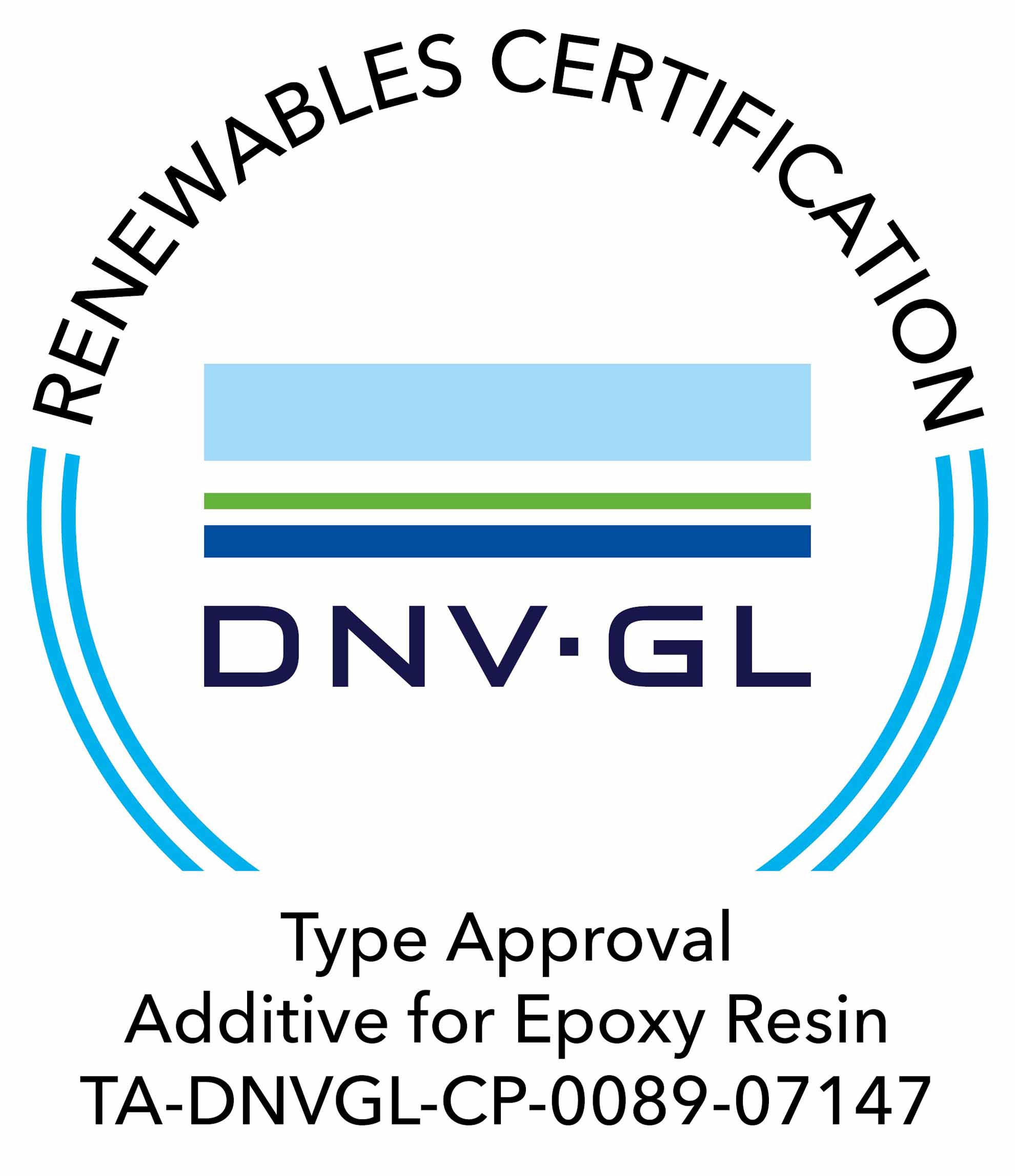BYK-C 8000
Polymer coupling agent for radically curable systems
Success story
Sustainability is not a new invention for BYK. Innovative solutions have long been part of our DNA - and sustainability has many faces. For example, a product can be made from bio-based raw materials; another form of sustainability is to give products a significantly longer service life. How would it be, for example, if in the course of the energy transition the rotor blades of wind turbines were significantly lighter and more stable, making the wind turbine more efficient? If it didn't have to be replaced or recertified after 15 or 20 years?

This is exactly where BYK comes in - with a very nice success story: its main protagonists are our so-called coupling agents, which are used in composite materials, and their "inventors," the teams led by Dr. René Nagelsdiek and Lee Gunning.
As so often, it all started by chance. New products were first tailored to the intended application by combining our existing know-how on surface and interfacial chemistry with new points of contact. This included working with composites that "by nature" could not be brought together in a stable way - for example, fibers or fillers and the surrounding plastic matrix. It turned out that a certain research product worked particularly well on the old fiber - we had been provided with fibers that were several years old. So, we stayed on the ball. We tested, tinkered, refined. Existing knowledge was combined with new ideas. Something like this is far more complex than a non-expert might imagine. In the 2000s, the development of the coupling agents family took its course. Many, many hours, months - even years - were spent researching, developing, testing and certifying. With success.
Head of R&D Organic Rheology Additives
"Our products are bridge builders," says a delighted Dr. René Nagelsdiek, Head of R&D Organic Rheology Additives. The growing importance of wind power and electromobility, for example, requires an increasingly high degree of lightweight solutions that are at the same time extremely robust and made of reliably strong but very different materials.
That's three wishes at once - who can fulfill them? We can, our coupling agents from the BYK-C 80xx family are the game changer. And this is how it works:
Head of TS Advanced Composites
"As we all know, a chain is only as strong as its weakest link," explains Lee Gunning, Head of TS Advanced Composites. This is where we have to start - an important field of research and development in our end-use thermosets. The particular challenge is to use a chemical reaction to build a stable and durable network between high-tech materials that per se do not want to form resilient bonds; whereby compromises with regard to vital reliability are absolutely taboo. "The interfaces between plastics and fibers, for example, are the weak points in the system. Or rather: They were," says Lee Gunning.
The result was the first coupling agent for glass fibers and later its relative for carbon fibers - BYK-C 8001 or, in the further development for carbon fibers, BYK-C 8013. Tiny bonding agents: solvent-free, liquid additives - simple to use, but with Herculean performance. And this is not a claim but can be proven: in a vinyl ester system, for example, BYK-C 8013 significantly increased flexural strength by 55 percent, while transverse tensile strength increased by as much as 68 percent. Attested and sealed: Our product BYK-C 8001 carries the Germanischer Lloyd certificate, the first one worldwide for an additive in the wind energy sector.
What does that mean in practice? Let's stay with the topic of wind turbines: the advantages of our additives are considerable in terms of sustainability, because they make wind turbines more efficient in a booming market in several respects. Because BYK-C 8001 strengthens the material, improves its mechanical characteristics and thus makes it significantly more robust, it is possible to build longer, lighter and more durable rotor blades - which deliver more power but do not weigh more, and above all: do not fail mechanically! At the same time, the composite material can also be used as a "fountain of youth." Old material fibers, for example glass fibers, are subsequently strengthened by our additive. This means that they do not have to be disposed of but can be used with comparable performance to "fresh material".

Of course, there is no "one" universal coupling agent that magically bonds everybody's materials. Custom tailoring is required for this; but here, of course, the customers are in exactly the right place with BYK and our in-house experts. And that's why the success story of coupling agents is certainly not over yet.